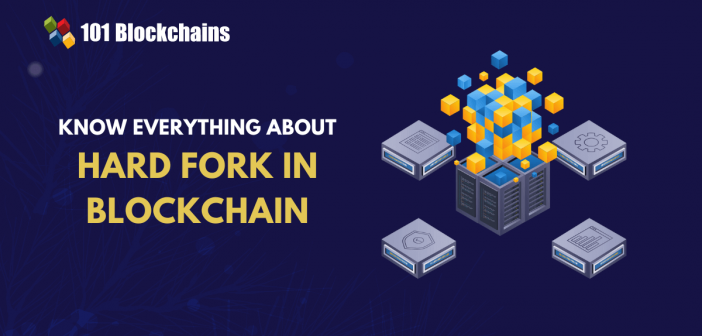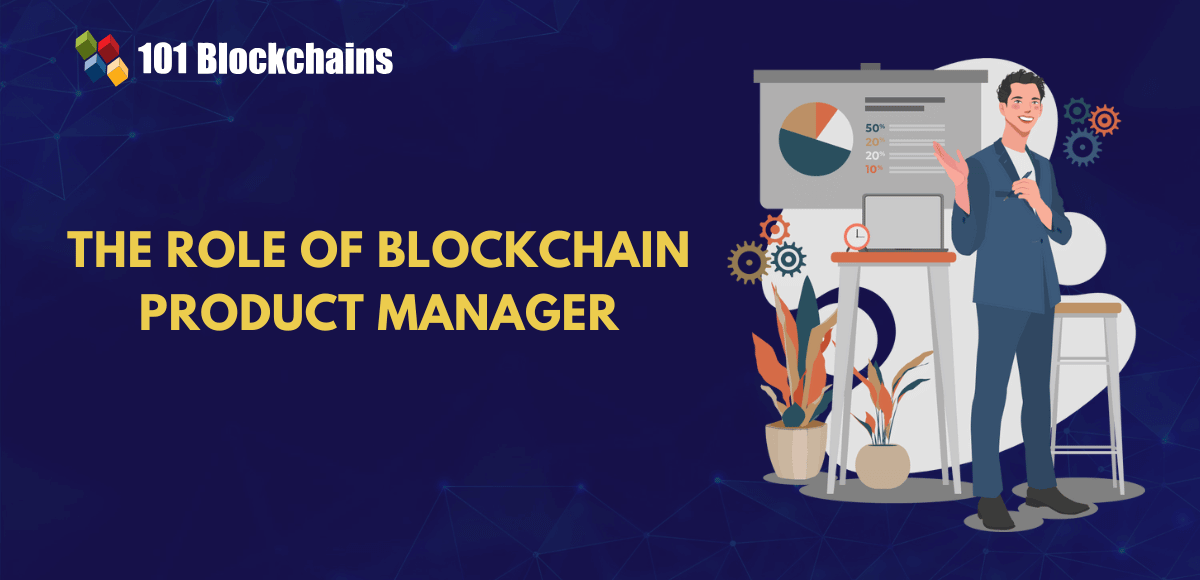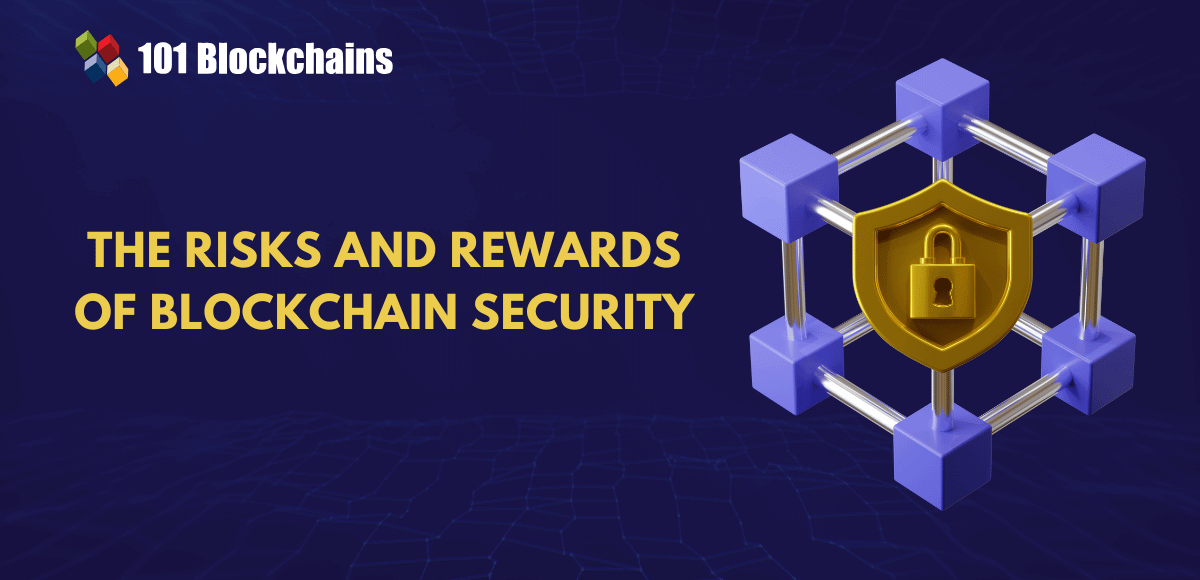Learn how blockchain truly works, master key definitions, and uncover what makes smart contracts so "smart." Dive into the fundamentals, gain valuable insights, and start your blockchain journey today!

- Blockchain
Georgia Weston
- on August 21, 2024
What is Hard Fork in Blockchain & How Does it Work?
The concept of forks in blockchain technology is quite common and widely used. Fork basically involves copying the code and changing it for the purpose of creating a new version or software. Now that you have an insight into – ‘What is a fork in blockchain?’ It is time to dive into the concept. Hard fork involves dynamic modification in the protocols and processes of blockchain networks.
Hard fork in blockchain is a common event that blockchain developers use for diverse purposes. Hard fork working in blockchain may be used as a part of a simple maintenance activity. Regardless of its use, hard fork is an important event that you need to be aware of in the blockchain arena. Let us learn about the concept an in-depth level.
Build your identity as a certified blockchain expert with 101 Blockchains’ Blockchain Certifications designed to provide enhanced career prospects.
An Insight into Hard Fork
A blockchain hard fork refers to an event which involves a change in programming. Due to such a change, it becomes incompatible with previous programming. Hard fork working in blockchain results in the creation of a new blockchain as well as cryptocurrency. The process can lead to the validation of transactions as well as blocks that were categorized as valid or invalid. Hence hard fork requires all the users who want to remain on the new chain to upgrade to the latest software version.
The rule change that takes place via hard fork may be initiated by blockchain developers. However, the process may also be started by the members of the blockchain community. It is essential to note that blockchain hard fork has the potential to give rise to wide-ranging effects. Now that you have clarity on the specific types, it is time to explore its features and attributes.
Get familiar with the terms related to blockchain with Blockchain Basics Flashcards.
Key Features of Hard Fork
Hard fork in blockchain has a number of unique features. Before diving into how hard fork working in blockchain takes place, you must familiarize yourself with the concept thoroughly. Some of the chief features of hard fork are:
- Blockchain protocols are altered in a non-backwards manner. Hence the change is permanent and
- The process results in the development of entirely new currencies.
- While one branch of the blockchain is the old version, the other part is the newer version which has no resemblance with the old blockchain version.
- In blockchain hard fork, no fungibility exists between the new offshoot and the previous or old cryptocurrency.
- Hard fork in blockchain may be considered to be disruptive in nature as it may give rise to security concerns.
How does Hard Fork in Blockchain work?
The hard fork event fundamentally leads to the emergence of a completely new blockchain version which is incompatible with the original version. Although it may be disruptive, it may not always be adverse. In order to understand how hard fork works, you need to have a comprehensive insight into blockchain technology.
-
Software layers
Blockchain technology involves programs that develop as well as store information on computer networks. It encompasses a diverse range of software layers. Their layers are responsible for carrying out a broad range of tasks and operations. It is possible to make changes to the underlying programming of the software layers. However, in order to do so it is essential for all the participants within the blockchain network to accept the same.
-
Blockchain Fork
When a change is published by developers, it may take place either via hard fork or soft fork. Hard fork is when drastic changes take place. Due to the drastic nature, the participants running the old version may be prevented from taking part in the blockchain processes. On the other hand, when it comes to soft fork, both old and new nodes are operational.
-
Choice for blockchain participants
In case of hard fork event, participants or users within blockchain networks have to make a choice. An option before them is to make updates to their software so that it will be compatible with the new version. Another option that is available with them is to make no updates. If they choose not to make any updates, they can continue using the old blockchain version.
-
Outcome of Hard Fork
The outcome of hard fork in blockchain involves the creation of a permanent chain. It is caused by the splitting of the previous blockchain version into two branches including the old blockchain version and the new blockchain version.
Key Stages in Hard Fork
The initiation of hard fork takes place when there is a change in the protocols of a blockchain network. In order to get a comprehensive insight into the concept a sequence of stages have been presented.
- The proposal relating to changes may be given for diverse reasons such as tackling security concerns or integrating new features.
- After the changes have been agreed upon, it is time to perform the coding.
- Subsequently it is time to choose a particular block number.
- When the particular block number approaches, notes within the blockchain network update to the new or changed protocols.
- After the arrival of the specific block number, the activation of the fork takes place.
- Once the activation is complete, the fragmentation of the blockchain takes place into two branches.
Chief Reasons for Blockchain Hard Fork
Blockchain developers may prefer hard fork in blockchain for numerous reasons. One of the most common reasons for Blockchain Hard Fork is disagreement among developers. In such a scenario, the specific blockchain fork mechanism serves as a useful method to handle the disagreement. Another common reason for hard fork in blockchain is when there is a need to make updates to a blockchain network.
In such circumstances, developers have no choice but to use the blockchain fork to ensure that the blockchain remains updated. One may engage in hard fork events in case they wish to create a new blockchain and cryptocurrency that they control. The existence of diverse reasons makes hard fork in blockchain a common practice.
Start learning Blockchain with World’s first Blockchain Skill Paths with quality resources tailored by industry experts Now!
Advantages of Hard Fork
The hard fork event in the realm of blockchain can give rise to a host of advantages. In order to get a comprehensive insight into the concept, you need to be aware of the advantages that can arise within blockchain networks due to hard fork.
- One of the main advantages revolves around better security. Hard fork can help address security concerns within blockchain networks. As a result, it can create value for participants within the network. They can engage in transactions in a safe and secure manner.
- Can improve the performance of blockchain networks. The creation of a newer version of a blockchain may have improved features in comparison to the previous version.
- The process creates an opportunity for developers to integrate new functionalities to blockchain. Hence there is an opportunity for users within the blockchain community to pursue diverse visions for their projects.
In order to understand the hard fork working in blockchain, it is essential to learn about the associated advantages. It will help you have an open mind in the event of hard fork.
Disadvantages of Hard Fork
It is true that hard fork may give rise to a number of advantages. However, it is essential to keep in mind that it may also give rise to certain disadvantages. Blockchain developers as well as members of blockchain communities need to be aware of the key disadvantage.
- One of the fundamental disadvantages is that it may give rise to confusion among investors. When a new and similar cryptocurrency comes into existence it may perplex investors and hamper their ability to engage in transactions.
- Another disadvantage is that it may give rise to vulnerabilities within the network. Therefore, the possibility of attacks by malicious parties such as online hackers and cybercriminals may increase.
- The branching of a blockchain into an older version and a new version may lead to fluctuation in value. As a result, participants may consider it to be a form of hindrance.
In the event of hard fork in the blockchain realm, a number of negative effects may arise. The disadvantages may diminish the overall effectiveness of hard fork. It is essential to carefully weigh the advantages and disadvantages before determining whether blockchain hard fork is required or not.
Start learning Blockchain with World’s first Blockchain Career Paths with quality resources tailored by industry experts Now!
Final thoughts
In blockchain technology hard fork is a common practice among blockchain developers. Developers or blockchain community members may opt for the process for diverse reasons like adding new functionalities or features, resolving disagreements or conflicts, etc. For understanding how hard fork works it is imperative to take into account the positive as well as the negative implications.
Blockchain developers need to have a solid understanding of hard fork so that they can engage in it when necessary. In the case of hard fork, participants need to make their choice carefully regarding the use of the old or the new version of the blockchain. You can learn more on the concept of hard fork and its significance in the blockchain landscape.
*Disclaimer: The article should not be taken as, and is not intended to provide any investment advice. Claims made in this article do not constitute investment advice and should not be taken as such. 101 Blockchains shall not be responsible for any loss sustained by any person who relies on this article. Do your own research!






